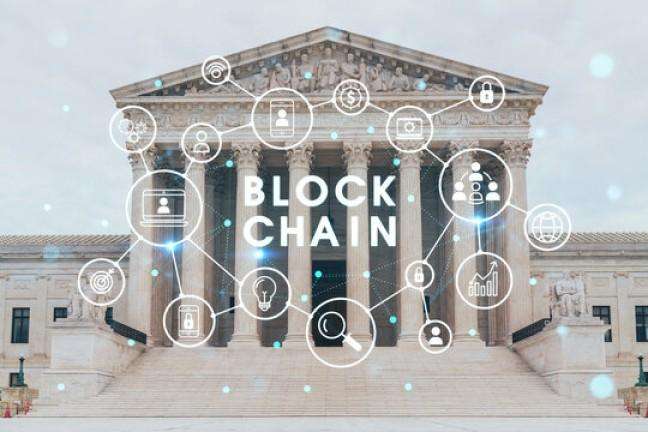When I first encountered the concept of blockchain, it struck me as something revolutionary, but at the same time, I was cautious. The idea of decentralized networks where transactions could happen without a middleman, such as a bank, was both fascinating and daunting. Over time, I’ve come to understand that public blockchains offer a unique set of advantages, which make them a promising technology for a wide range of applications. In this article, I’ll dive into the many advantages of public blockchains, explain how they work, and illustrate their potential through real-world examples. Along the way, I’ll also use comparisons to help clarify how public blockchains stack up against other types of blockchains and traditional systems.
Table of Contents
What is a Public Blockchain?
A blockchain is essentially a distributed ledger, a kind of database that records transactions in a secure, transparent, and immutable way. What makes a blockchain “public” is its open nature. Anyone can join, verify, and participate in the network. Unlike private blockchains, which are controlled by a central entity or a set of trusted parties, public blockchains are decentralized. This means no single individual or organization has full control over the network, which in turn ensures transparency and security.
Key Advantages of Public Blockchains
- Decentralization
One of the most powerful features of public blockchains is their decentralization. In traditional systems, a central authority (like a bank or a government) controls the ledger and verifies transactions. This introduces risks such as fraud, corruption, or even censorship. On a public blockchain, no single entity has control. The ledger is maintained by thousands (or even millions) of participants across the globe, making it much harder to manipulate.Comparison of Control in Traditional vs. Public Blockchain SystemsSystemControl MechanismExampleRisk of ManipulationTraditionalCentralized AuthorityBank, GovernmentHighPublic BlockchainDecentralized NetworkBitcoin, EthereumLowPublic blockchains offer an inherent level of security because there’s no central point of failure. If a hacker were to attack one node in the network, they would need to control a majority of the nodes to successfully alter the blockchain, which is extremely difficult and costly. - Transparency
The transparent nature of public blockchains is another key advantage. All transactions are recorded in a public ledger that anyone can access and review. This level of transparency reduces the possibility of fraudulent activities and ensures that participants can trust the system. When I say the ledger is public, I mean that the entire history of transactions is visible to everyone, ensuring that everyone has the same information.Example:
In traditional systems, if I transfer money to someone, there’s a bank to verify the transaction. The details of this transaction are not publicly visible. On a public blockchain like Bitcoin, if I send BTC to someone, the transaction is recorded on the blockchain and can be viewed by anyone. This transparency ensures there is no confusion or dispute over the transaction. - Security and Immutability
Security is a critical factor in any digital system. Public blockchains are incredibly secure due to their decentralized nature. Once a transaction is added to the blockchain, it becomes immutable. This means it cannot be altered, deleted, or tampered with. The cryptographic algorithms and consensus mechanisms used in public blockchains make it extremely difficult to manipulate past transactions.Illustration: Security vs. Traditional SystemsFeaturePublic BlockchainTraditional SystemSecurityDecentralized, uses cryptographic hash functions, immutableCentralized control, vulnerable to hackingTransparencyAll transactions are publicTransactions are private, limited accessImmutabilityOnce added, cannot be changedData can be altered or deletedIn a traditional system, if someone gains unauthorized access, they can modify the data. In a public blockchain, the data is locked in a cryptographic chain, making any changes almost impossible without being noticed by the entire network. - Lower Transaction Costs
Public blockchains enable peer-to-peer transactions without the need for intermediaries like banks or payment processors. This often leads to lower transaction fees. In traditional payment systems, a middleman verifies the transaction, and they charge a fee for their service. On a public blockchain, participants verify transactions, reducing the need for costly intermediaries.Example Calculation:
Let’s say I want to send $100 to someone in another country. Using a traditional bank, I might pay a fee of 3% plus $5 for the transaction. This means I would lose $8 (3% of $100 = $3 + $5 = $8). On a public blockchain like Bitcoin, the transaction fee could be much lower (around $1 or even less), and the transaction can happen in minutes, without the need for any intermediaries. - Global Accessibility
Public blockchains are borderless. Anyone with an internet connection can participate in the network. This makes them especially useful in regions where access to traditional banking is limited or nonexistent. With a public blockchain, even people in remote areas can send or receive money, trade assets, or use decentralized applications (dApps), as long as they have access to the internet.Real-World Example:
In countries with unstable economies or limited access to banking, people are turning to Bitcoin and other public blockchains as a store of value. In Venezuela, for instance, where inflation is rampant, many people use Bitcoin as a more stable alternative to the national currency. This is because Bitcoin operates outside the control of any government or financial institution, allowing it to maintain its value in times of crisis. - Censorship Resistance
One of the most compelling reasons to use a public blockchain is its resistance to censorship. In centralized systems, authorities can block transactions or restrict access to services. On a public blockchain, it’s almost impossible for a single entity to censor or block transactions. This makes public blockchains particularly attractive for activists, whistleblowers, or anyone in an environment where free expression is restricted.Example:
Imagine I’m living in a country where my government is blocking access to certain websites or social media platforms. With a public blockchain, I could bypass these restrictions and access decentralized applications or services without interference from the government. - Faster Transactions
Traditional banking systems can take several days to process cross-border transactions. Blockchain transactions, on the other hand, can be processed in a matter of minutes or even seconds, regardless of where the parties are located. This is especially true for public blockchains that use proof-of-stake or other efficient consensus mechanisms. For example, Ethereum is transitioning from proof-of-work to proof-of-stake, which is expected to drastically increase transaction speeds while reducing energy consumption.Comparison of Transaction SpeedsSystemAverage Transaction TimeExampleTraditional Banking2-5 days (international)Bank transfer to international accountPublic Blockchain (Bitcoin)10 minutesBitcoin transaction between two usersPublic Blockchain (Ethereum)10-20 secondsEthereum transfer or smart contract execution - Smart Contracts and Automation
Another significant advantage of public blockchains is their support for smart contracts. These are self-executing contracts with the terms of the agreement directly written into code. Smart contracts can automate complex processes without the need for intermediaries. They can trigger actions like transferring assets, updating records, or executing agreements once predefined conditions are met.Example:
Imagine I’m renting out a property and we use a smart contract for the agreement. Once the payment is made, the smart contract automatically transfers the ownership of the digital key to the renter. This eliminates the need for a third party to verify the transaction and saves time and money for both parties.
Conclusion
Public blockchains present an exciting opportunity for anyone looking to participate in decentralized systems. From increased transparency and security to lower costs and faster transactions, the advantages are clear. The technology has already begun transforming industries such as finance, supply chain, and governance. While there are still challenges to overcome, such as scalability and energy consumption, the overall benefits of public blockchains make them an attractive option for anyone seeking a more efficient and trustworthy way of handling transactions or managing digital assets.
As I continue to explore the space and witness new use cases emerge, it’s clear to me that public blockchains are not just a trend but a fundamental shift in how we interact with digital systems. I believe they hold the potential to create a more transparent, secure, and accessible world for everyone.





